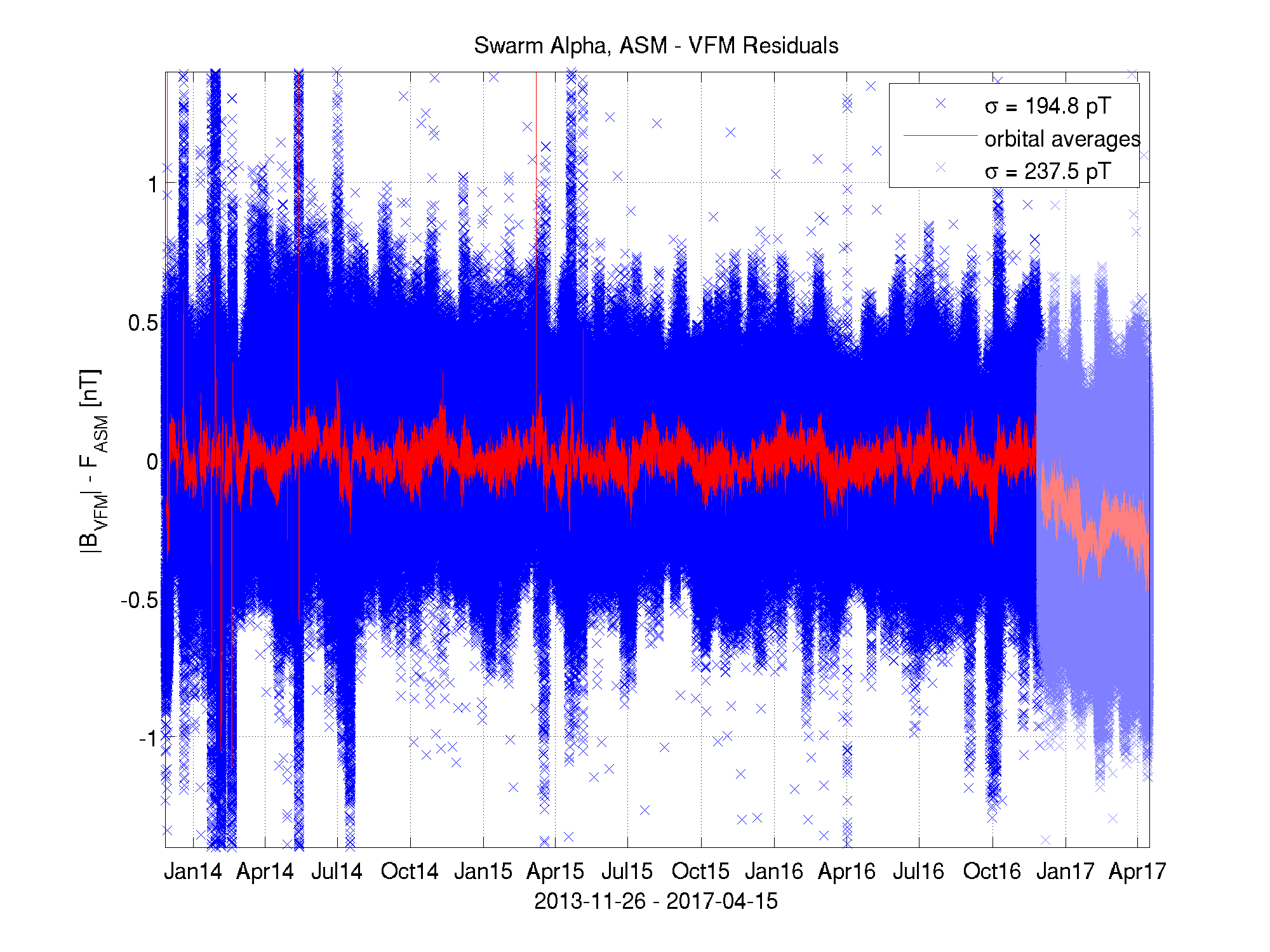
The generation of the Advanced version 0501 magnetic Level 1b data for Swarm used a scaling of the VFM measurements dependent on the following parameters:
The co-estimation of the calibration parameters and Sun induced magnetic disturbance, dBSun, was based on ASM and VFM data from BOM until end of November 2016.
When applying the estimated set of calibration and characterisation parameters to the VFM measurements from December 2016 through mid April 2017, the ASM-VFM scalar residuals were not as small as hoped for. The plots below show the ASM-VFM scalar residuals for the entire mission for Swarm Alpha and Bravo, the dimmed part at the end indicate the period December 2016 through mid April 2017. Note: A 20° yaw manoeuvre was performed on Swarm Bravo in the period 20th March 08:01 UTC through 27th March 18:55 UTC, 2017.
Clicking on the above plots brings up enlarged versions where different parametrisations of the VFM scaling have been used in order to investigate if one set of parameters should produce better prediction than others. Three models have been tested: with all three parameters listed on the top of this page, leaving out sbeta, and leaving out sTeu; neither model showed superior prediction capabilities over the others.
Re-calibration (re-estimation) of the full parameter set using the complete set of data is expected to reduce the scalar residuals to the same level as before; however this is not entirely the case. The plots below show the orbital averages of the residuals since 2016 before (in red) and after (in green) re-calibration. Particularly for Swarm Bravo there seem to be an offset in the residuals occuring in the beginning of March 2017 (the 20° yaw manoeuvre is indicated with dashed, vertical lines; data from this period has been excluded from the re-calibration). For Swarm Alpha the deviation is not too significantly different from other periods.
When looking at the original ASM-VFM scalar residuals (below) there are some behaviour in 2017 which may explain the lack of full reduction of the residuals of the 2017 data. Hopefully, the inclusion of data after mid April 2017 will help to clarify the situation.